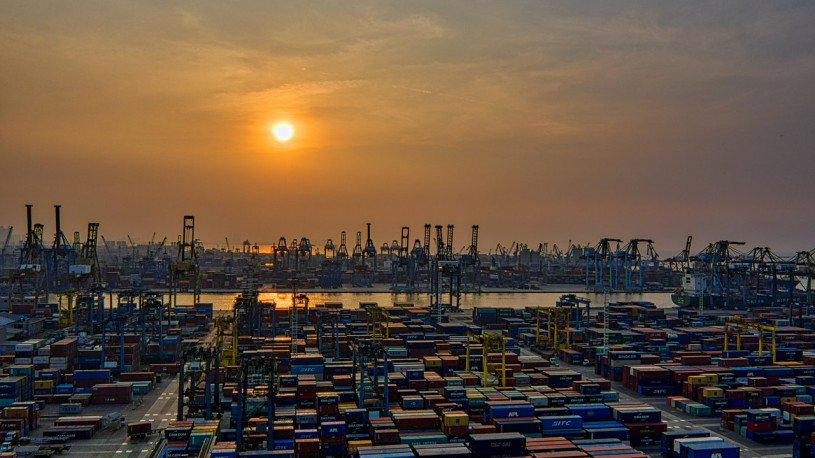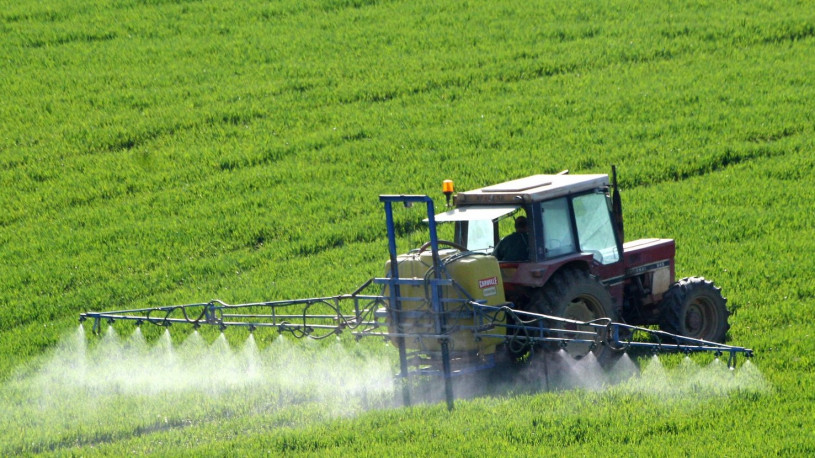-
Despite Growth, the Chemicals Industry Faces Hard Times
 Continue Reading
Continue ReadingToday’s chemicals industry is in a healthy position. It is growing steadily at a global rate of about 5%, oil prices have hit a ten year low, the US and UK economies are showing signs of recovery and the market is expected to double in value from today’s €2.5 trillion to more than €5 trillion by 2030.
It seems that there are good times ahead; time to supplement the pension pot and still hire more staff. And yet, there are grey clouds on the horizon.
These clouds come in a variety of forms, but include the following;
- unstable oil prices
- shorter product life spans
- increasingly limited access to raw materials
- increasing influence of being environmentally friendly, including new ‘green’ legislation
- majority of growth is in Asia (whilst Europe will experience only 2% expansion)
In many ways, it is amazing that an industry under so many social and economic constraints could still be expected to double in size in our lifetimes. As Alexander Keller, partner at Roland Berger Strategy Consultants states, “Despite greater volatility in the chemicals market over the past two years, the global chemicals market will continue to grow. This growth will be driven to a disproportionately large extent by the Asian and special chemicals markets, which will also shape the future of the chemicals industry.” Keller explains further, by noting that 43% of growth will be in Asia, specifically from the increasing demand for plastics and speciality chemical products.
So what can we expect to see in the chemicals market of 2030?
There will be a number of major challenges to face in the market of the future, as it is expected that there will be much smaller margins, caused by higher costs. This will be due to a number of factors but will include;
- increased energy costs, as population growth outstrips increases in production
- restricted access to raw materials, as natural resources become harder to find
- greater emphasis on sustainability, including national and international legislation regarding the environment, ethical sourcing of materials and responsible disposal and treatment of waste products
It is also expected that there will be increased competition in the market that will further reduce margins. This will be a result of population growth and the expansion of the industry in regions that previously produced little or no chemical products. As countries in Africa, South America and South East Asia, that had limited infrastructure and technological know-how thirty years ago, become increasingly competitive. They will be better placed to access raw materials and have newer and more modern manufacturing plants, as well as being closer to expanding markets.
This will be particularly true for companies that are focused on special chemical segments, such as flavours and fragrances. Businesses in these sectors will face competition from big brand names, huge customer portfolios and innovative product technologies. As Keller explains, “There is fierce competition in this specialized market segment – driven by significant customer orientation. Furthermore, Asian investors are acquiring more and more companies in Western countries to gain easier access to these companies’ technologies and customers.”
This is an opinion backed up by business analysts at IHS who note that “During the last ten years, the specialty chemicals industry has experienced slower growth and lower overall profitability within a more competitive environment. The predicted growth rates for 2013–2018 are 2% for the three major regions (North America, Western Europe and Japan), and 3.8% on a global basis.”
How should businesses react?
As a result of these changes, successful businesses must adapt their current practices to meet the challenges ahead. Keller predicts that there will be three possible scenarios for the chemical industry of the future, these are;
- Global prosperity: If there is enormous market growth, across all sectors, with a market value in excess of €6 trillion by 2030, through population growth and increased consumerism, successful businesses will be those who innovate and employ cutting edge technology. To match these demands, research must be a prime focus of attention for today’s companies.
- Stability in the West: This scenario assumes that mature markets will experience only moderate growth, and that the majority of market expansion will be in newer markets, such as South East Asia and Africa. In this scenario, the market value will be €5 trillion. Here firms are advised to focus on improving efficiency (including recycling) in North America and Europe.
- A Regionalized World: In this scenario, it is thought that growth in mature markets will stagnate, and that there will be only moderate growth in emerging markets. If this happens, firms are advised to focus on regionalised production and cost reduction. R&D will also be limited, so there will be less focus on innovation.
Making changes to proven successful strategies can be scary and are certainly hard work, but if new industry trends are to be matched and new markets tapped, then it is vital that firms adjust. Remember, the industry will more than double in value in our lifetimes. That means that there is an estimated €2.5 trillion of business to be captured, but only for those who realign their practices.
Yes, there are grey clouds on the horizon, but we have already sailed through the storm clouds of the economic crisis. In the chemicals industry only the strongest and most business aware will survive, and when it comes to seeing the future, a certainty like that becomes quite comforting.
-
Replacing Phosphates in Detergents
 Continue Reading
Continue ReadingEvolutionary theory has so far shown us nature will adapt, even with mankind’s constant development of technology and manipulation of the environment. But that is not to say that mankind shouldn’t consider the effect it has on ecosystems, such as the eutrophication of surface waters. This occurs when phytoplankton excessively blooms in water. These explosions of growth upset the balance of the water, either blocking sunlight from other water born vegetation or by depleting oxygen levels such that aquatic life dies.
Eutrophication is caused by either the addition of fertilisers to a water source (typically the run-off from agriculture), or from the mass use of phosphates (from detergents and cleaning products) that are improperly disposed of.
With more careful use of fertilisers, improved land management and the switching to non-nitrous fertilisers, eutrophication caused by agriculture can be handled with relative ease. For detergents however, the problem is more complex.
Whilst some regions have installed reduction agreements to avoid the use of phosphates in cleaning products, this lead to the use of a variety of substitutes, for example zeolites or sodium tripolyphosphate (STPP), the effects of which have yet to be fully felt.
The European Commission had led a comprehensive study into the comparative effects of phosphates and phosphate substitutes in cleaning products, and has concluded that whilst the phosphate free compositions were generally more environmentally friendly, they were not as effective at cleaning, as they left a grey look to materials.
Other products that were better at washing and which had a low impact on ecosystems were prohibitively expensive.
It must therefore be concluded that a perfect solution has yet to be found for a ‘green clean’, which is why the use of phosphates continues. Alternative suggestions include the return of CFC’s or the degreasing clean from using chlorinated hydrocarbons, both of which have a big environmental impact.
The search for a cost effective solution must therefore continue. We need to adapt our approach to cleanliness, but as we do, we must ask ourselves, can nature adapt in time?
-
Beyond Nitrogen Fertiliser
 Continue Reading
Continue ReadingOur planet is hungry now. It will be hungry in the future. World population is expected to reach 9.5 billion by 2050 and possibly as many as 24 billion by 2150. Although these long term forecasts are speculative, whatever the future holds the planet will continue to benefit from the use of fertilisers. If the more extreme predictions of population growth hold up, then fertiliser performance will be vital if western civilisation is to survive.
All plants need nitrogen to grow, but as most can absorb it only from the soil in the form of nitrates or ammonia, mankind soon learnt that it was helpful to add ingredients to the soil to aid productivity. Therefore, for most of human history, we have been feeding ourselves by using a proven method of adding animal dung and plant waste, rich in nutrients to increase crop yields.
The development of an industrial process to manufacture ammonia in the early 1900’s changed the way we viewed agriculture. This meant the application in liquid or solid form of ammonium nitrate, urea-ammonium sulphate, urea-ammonium nitrate (UAN solution), urea, dairy manure and poultry litter.
Today, synthetic nitrogen fertilisers have led us to the modern world of mass production on farms, increasing food production by 35-50% since the 1940’s. They are used in all but the poorest of countries and form a base part in the production of every meal we eat.
In fact, we depend on them for our survival. As Wikipedia notes, “Conservative estimates report 30 to 50% of crop yields are attributed to natural or synthetic commercial fertilizer. Global market value is likely to rise to more than US$185 billion by 2019.The European fertilizer market will grow to earn revenues of approx. €15.3 billion in 2018.”
Whilst this has been a great success story in the progress of mankind, it is far from the end of the story, because our current methods have several major flaws.
- Energy. The production of nitrogen fertiliser is energy intensive, accounting for around 50% of the total fossil fuels burned in agriculture. Burning fossil fuels produces the greenhouse gas carbon dioxide, which causes climate change, which affects farmers more than most.
- When applied to fields, only about 50% of the nitrogen in fertiliser is actually absorbed by plants. The excess is washed out of the soil into rivers and lakes where it promotes the growth of algae. Excessive nitrogen fertiliser use can cause algal blooms that can kill life forms by blocking out light and lowering the oxygen content in the water.
This is a problem being tackled by many government worldwide, including in Western Australia where legislation has been implemented to ensure the “development and promotion of low impact fertiliser products” in an attempt to achieve “a goal of 50% reduction in nutrient loss to waterways and wetlands” by 2018.
- Greenhouse gases Excess nitrogen fertiliser in soil can also be converted into nitrous oxide by some bacteria. Nitrous oxide is a very strong and long-lived greenhouse gas, which currently has rising levels in the atmosphere. Agriculture is a major contributor to this increase and accounts for over 80% of total nitrous oxide emissions.
- Expensive The cost of producing and transporting nitrogen fertilisers puts them out of reach of many farmers in developing countries, especially those in more remote and barren areas. Ironically, the same areas where poverty and malnutrition mean that increased crop yields are most needed. As fossil fuels are depleted and energy prices increase farmers in these countries need alternative, more affordable solutions to supply nitrogen to their crops.
Furthermore, the application of fertilisers is an applied science. Less educated farmers need to know what they are putting in their fields and when, if yields are to be maximized. As crops change, different products are needed. As prices change, different amounts need to be applied to maintain profitability.
This is a growing problem, which makes the use of fertiliser an increasingly complex puzzle. As a study by Charles Mitchell of Auburn University and Deanna Osmond of North Carolina State University notes “Ammonium nitrate (34-0-0) formerly was the standard but has become difficult to find and transport. Solid urea-ammonium sulphate blend (33-0-0) is very acid-forming and subject to volatilization. Solid urea (46-0-0) has a high risk of volatilization losses during hot, dry summer months when surface applications are not incorporated. This is especially true when urea is applied on crop residue in a high pH soil.”
As you can see, there are many factors to take into consideration when using nitrogen based fertilisers, which means that the search for a replacement that is cheaper, better for the environment, easier to use, consumes less energy and is less exposed to price fluctuations is sorely needed.
And science is working hard to find a replacement, and has already come up with a number of alternatives to traditional nitrogen based fertiliser methods. These include;
- Slow- and controlled-release fertilisers Releasing ammonia and nitrate into the soil more gradually over a period of weeks or months, reduces the chances of run-off and are a generally more effective way of aiding plant growth. They are however typically more expensive than regular fertilisers.
- Simply better practice. Scientists at the International Fertilizer Development Centre based in the Netherlands, believe that frequently farmers turn too quickly to nitrogen based fertilisers. In response to this they have developed an Integrated Nutrient Management System which they believe can increase yields more effectively. They claim that, “The method has the potential to increase yield levels up to 4,500 kg/ha with 40% less fertiliser use while protecting the environment.”
Other studies also recommend a more detailed analysis of farming practices, particularly in developing countries where farming practices are based on traditional methods founded before a modern understanding of agriculture.
- Leaf absorption As leaves, as well as roots, can absorb nutrients, the Virtual Fertilizer Research Centre (VFRC) is conducting research into new methods of applying fertilisers, believing that they may hold the answer to more efficient absorption and therefore reduced usage.
“This direct path of nutrients entering the plant near the assimilation point might enhance fertilizer efficiency.” However, they do acknowledge that, “The efficacy of foliar fertilizer application is ambiguous because little is known about the plant processes governing uptake and utilization.”
- Different crops For hundreds of years man has employed crop rotation methods as a way of increasing fertility in soil. The planting of members of the legume family — such as peas and beans, as well as clover — often as a winter crop, can produce ammonia from naturally found nitrogen gas in the soil. Bacteria living within the roots of these plants provide the plant with ammonia in exchange for sugars. The relationships can be so successful that excess ammonia can be released into the soil, which farmers appreciate for the benefits it gives the next harvest.
The downside being that in drier climates, legume winter crops can consume valuable water from the soil that is needed for the main summer crop.
As further research is carried out, doubtless more solutions will be found. One such solution is the mass production of ammonia-producing bacteria, which could prove cheaper than industrially producing ammonia.
Since legumes have such a clever solution to accessing nitrogen, scientists are studying whether it is possible to cultivate ammonia-producing bacteria in the root systems of other plants by way of genetic modification. Since ammonia is produced most efficiently within the host legume plant, copying this method to enable wheat or rice to host ammonia producing bacteria would be an historic development.
No one can be certain what new discoveries will be made to ease our impending food crisis, but certainly something needs to happen if crisis is to be averted.
The most likely outcome is that several technologies will be developed, and need to be applied to replace our valuable nitrogen fertilisers, as there is unlikely to be a ‘one size fits all’ solution. Until these new products and methods are found mankind must take greater care of the resources it has. As Charles Mitchell of Auburn University says, “Given the high cost of nitrogen and the environmental consequences of losses into surface water and groundwater resources, nitrogen fertilizers must be managed very carefully,”
The one question remaining is whether the new developments can come into use in time to feed the world.
